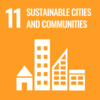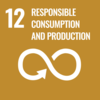For centuries, people built their homes using a material called cob. A mixture of subsoil and fibre, cob (known in France as ‘bauge’) was particularly popular in Southern England and Normandy, France. Over time, however, cob has been left behind by its inability to comply with the thermal aspects of many building regulations across the world – and supplanted by more energy dependent materials such as masonry and concrete.
It’s estimated that 8% of the world’s carbon footprint (Olivier et al., 2016) is owed to concrete. Cob on the other hand is an ultra-low carbon material – it comes from the Earth and can return there when the lifespan of the building is complete. This is the rationale behind CobBauge, a cross-Channel research project that has upgraded cob in the laboratory so that it now complies with regulations, and which is now being tested and evaluated in a single-storey ‘living laboratory’ on the Plymouth campus.



